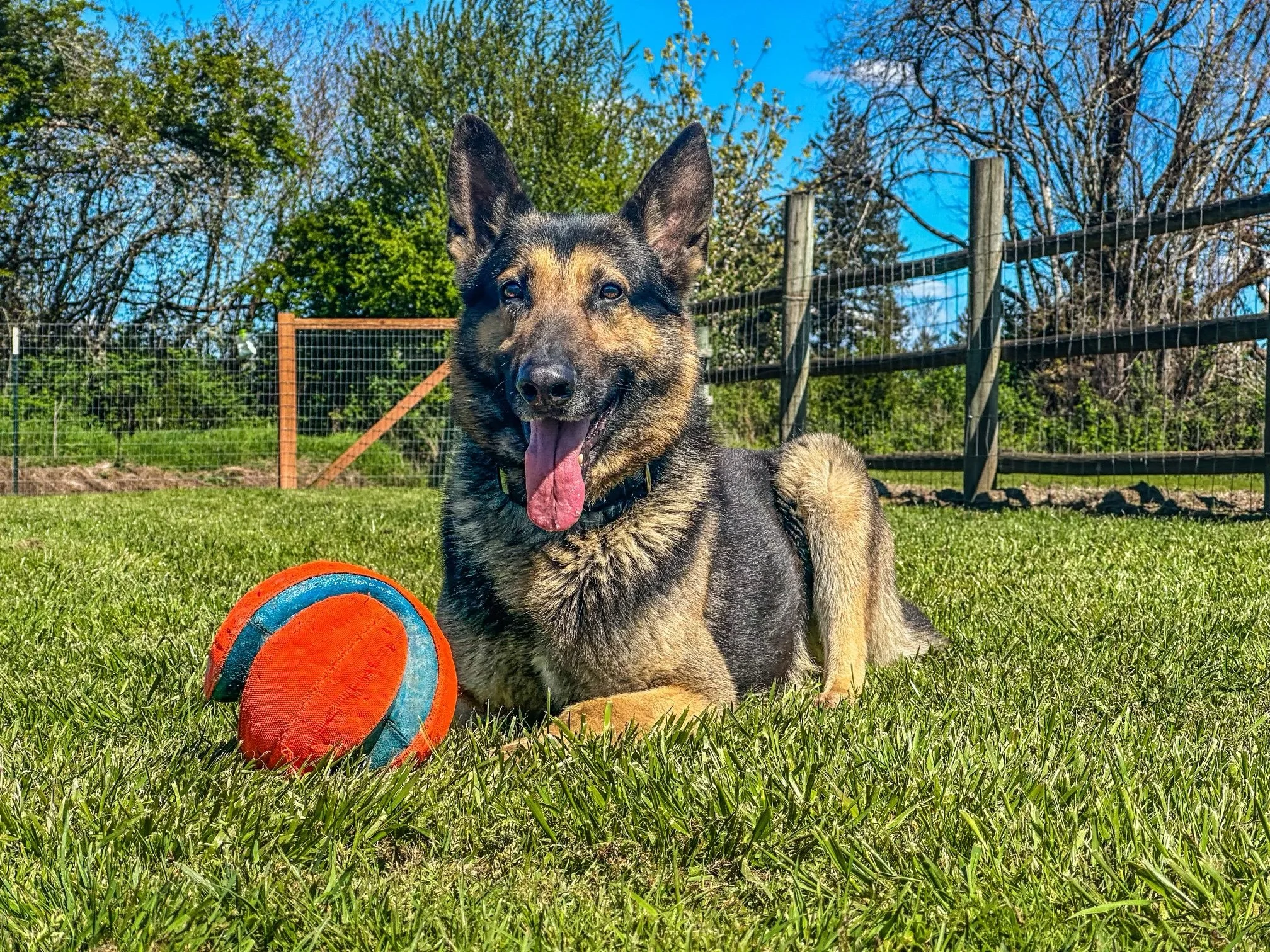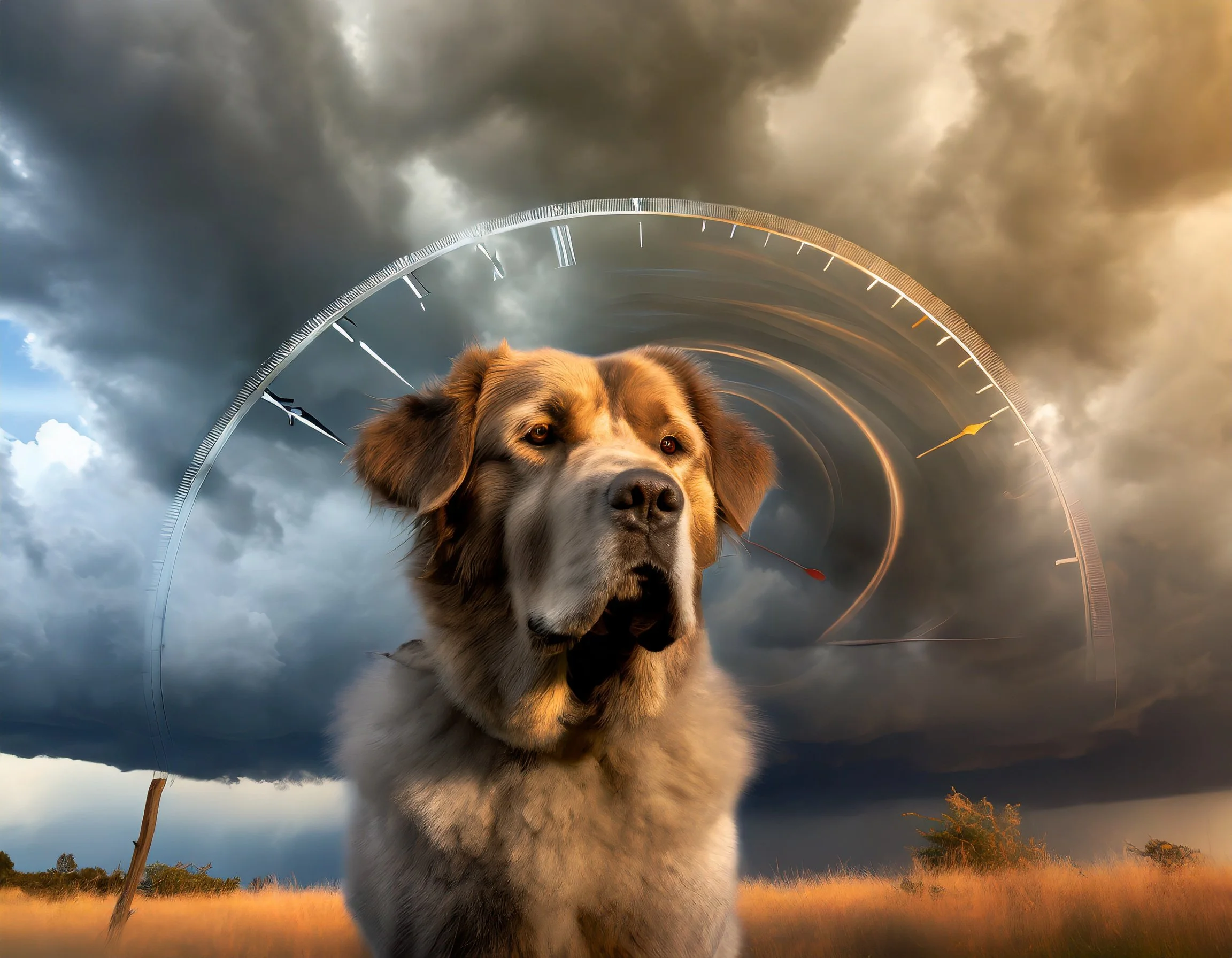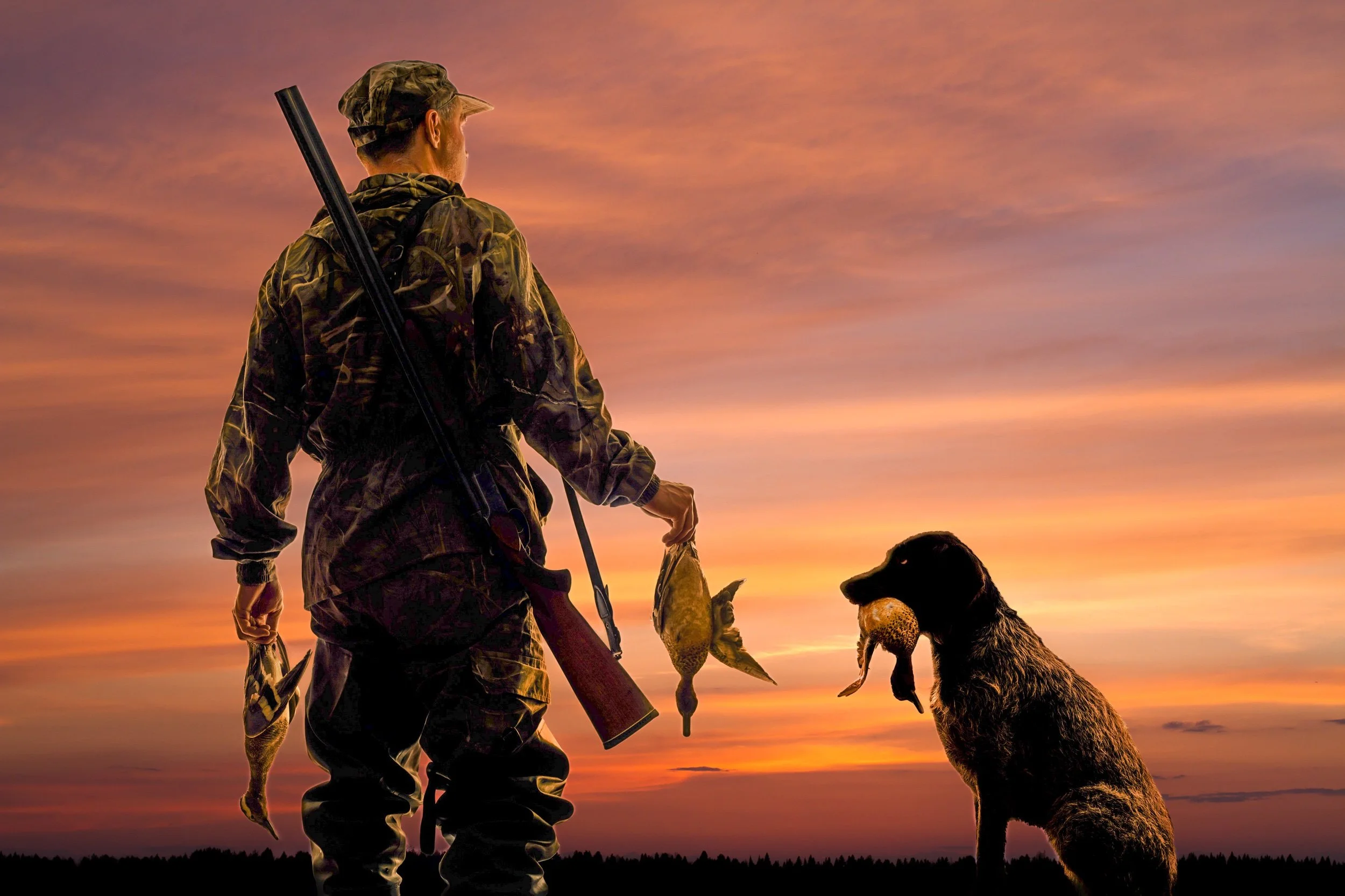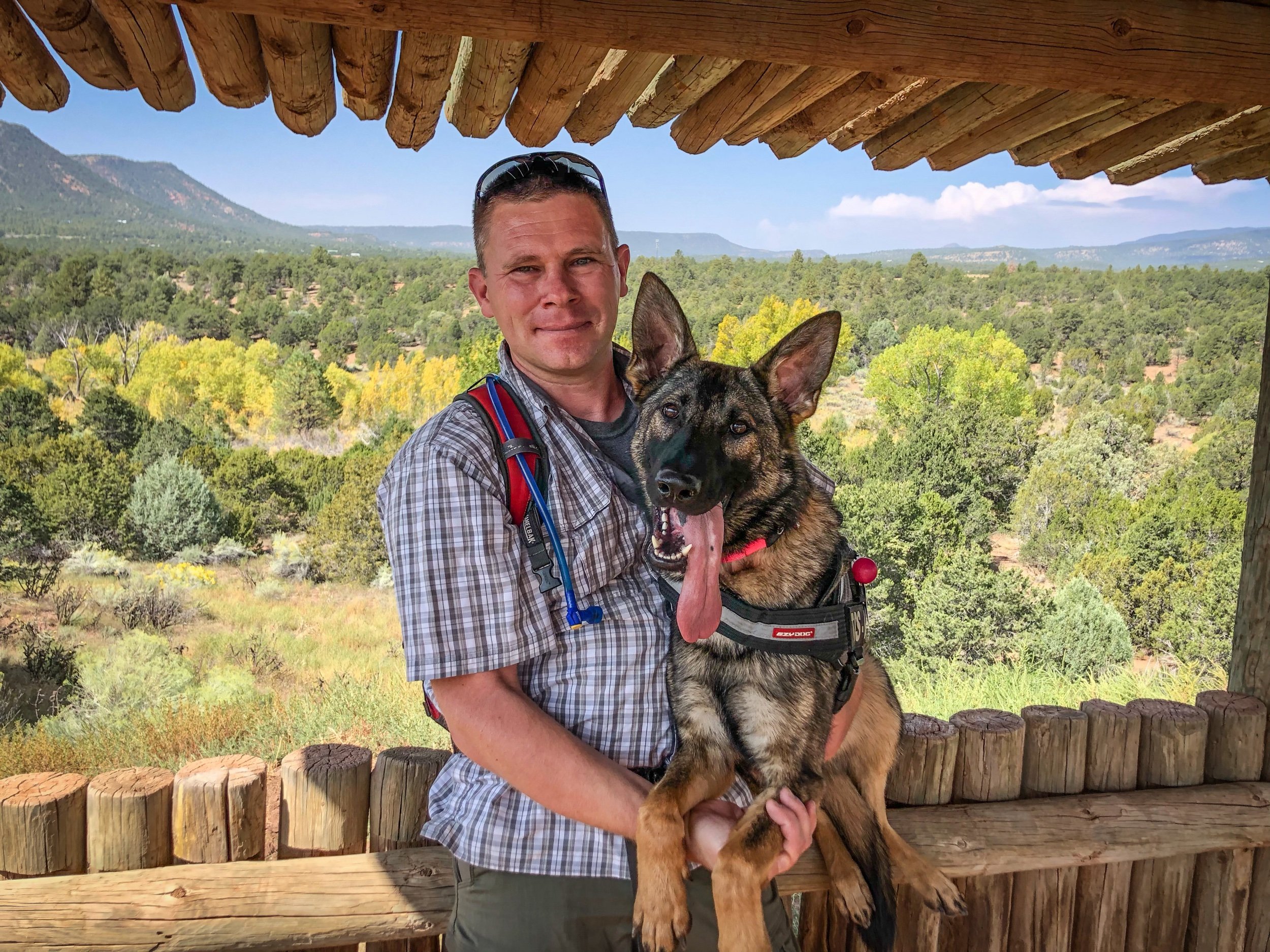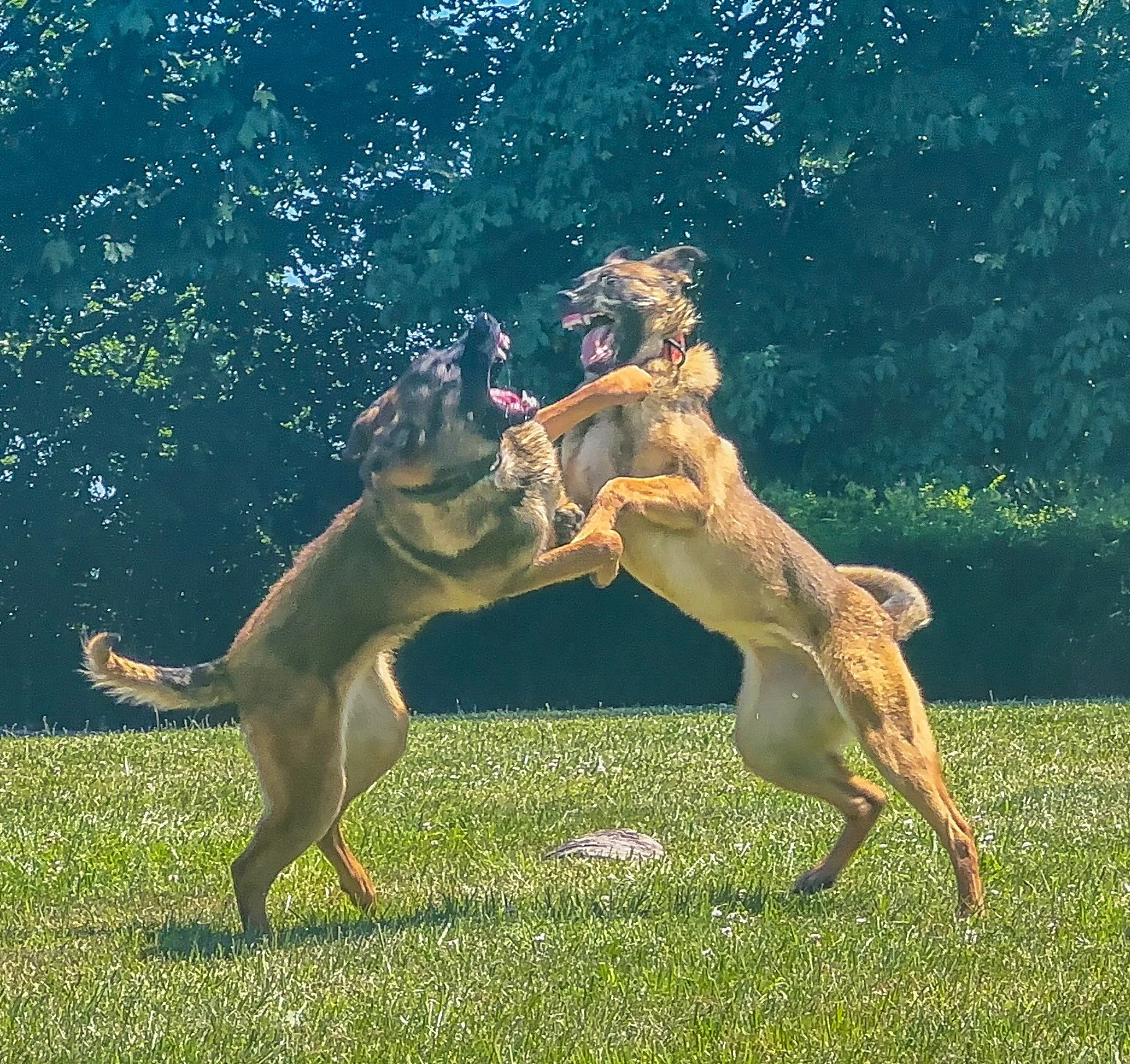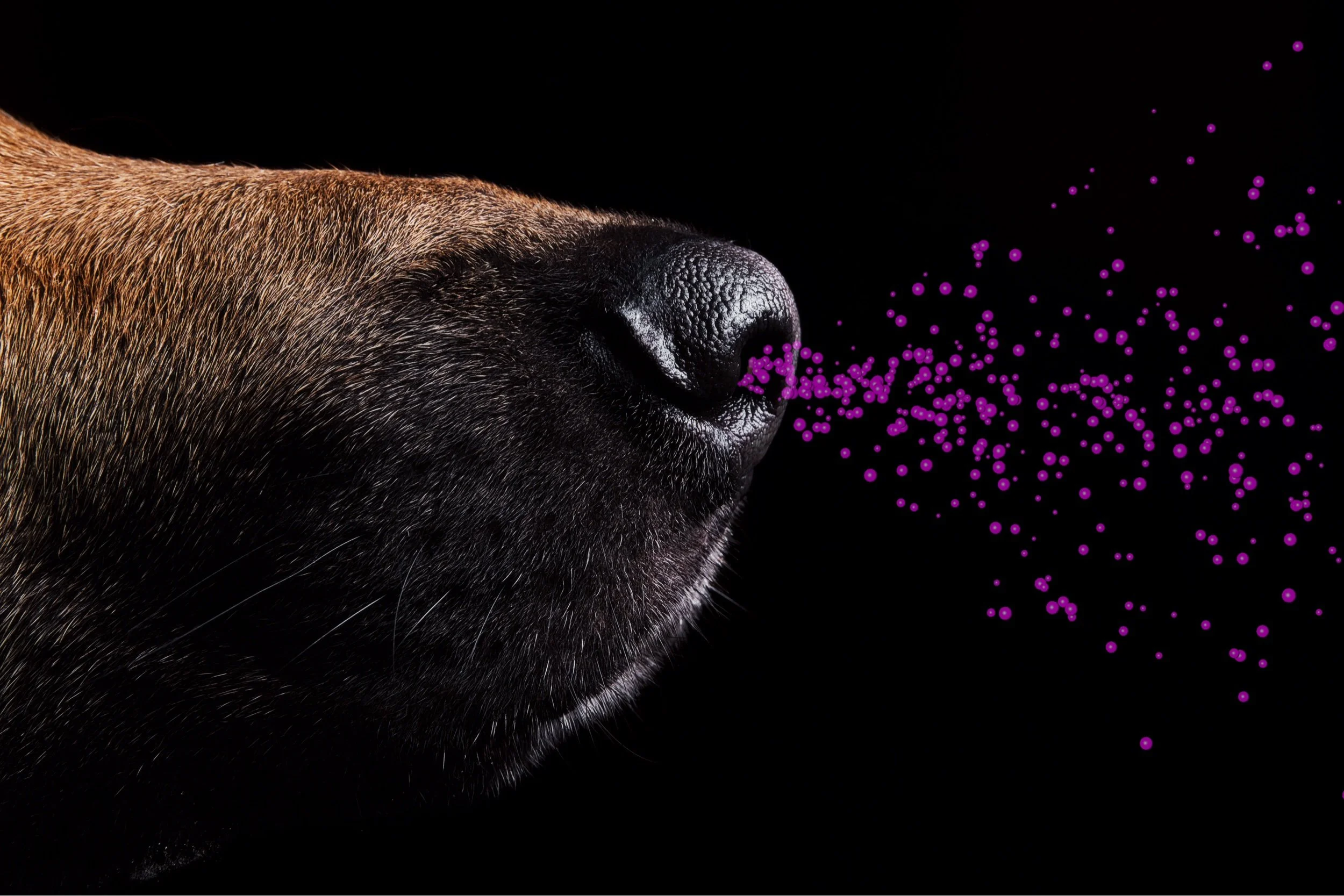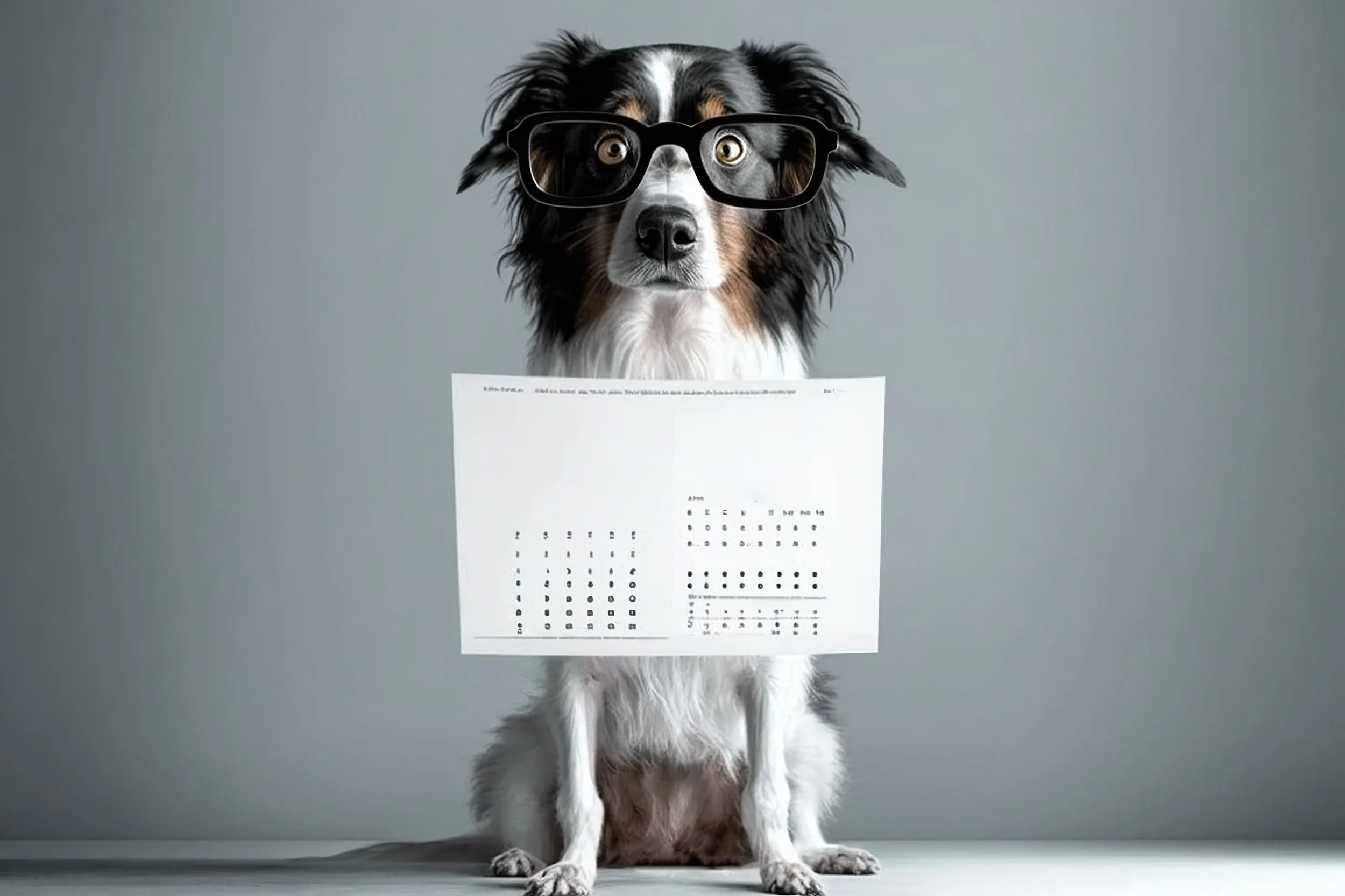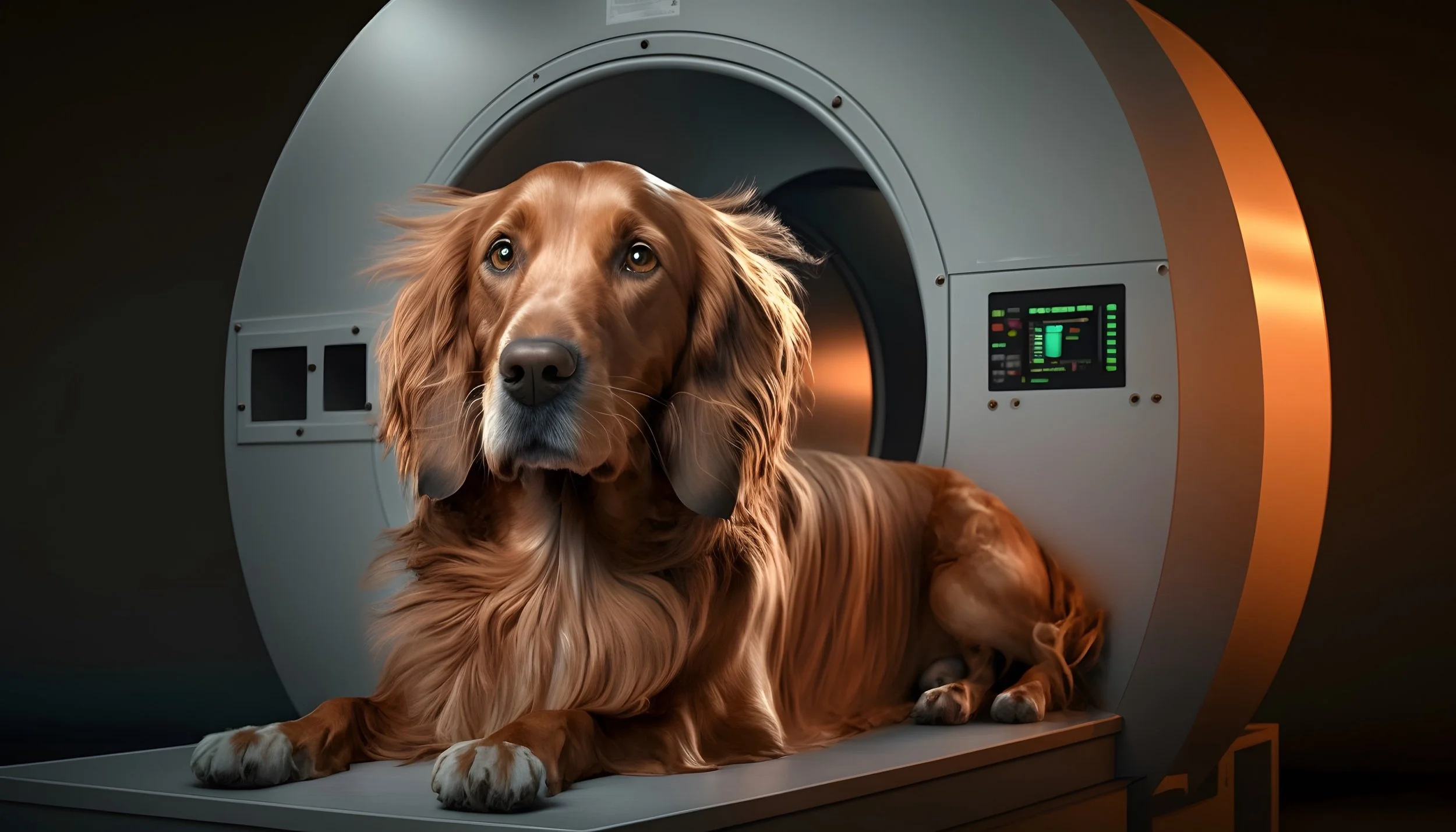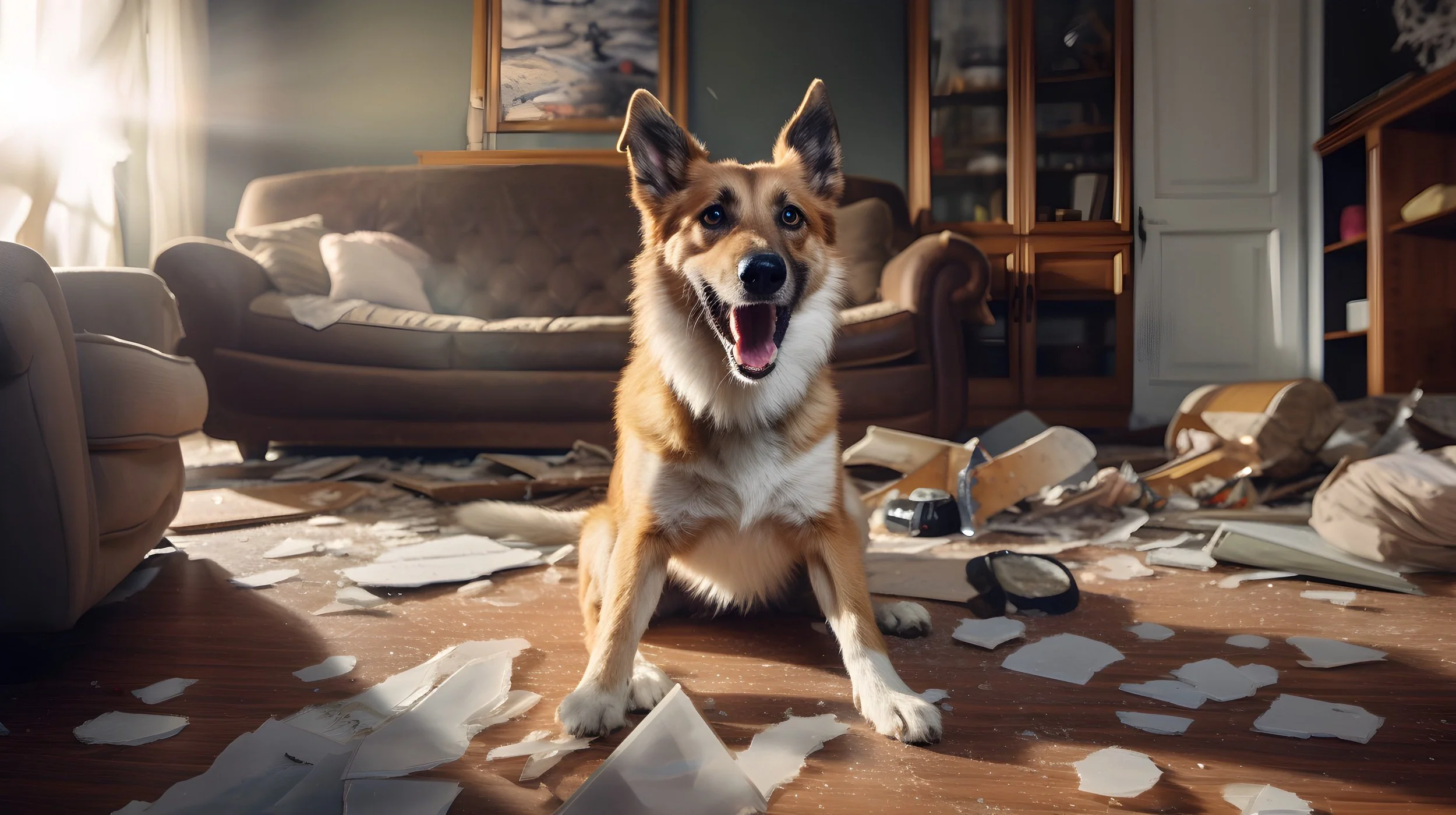Now that we are in winter and experiencing storms, it's an opportune time to delve into the fascinating world of barometric pressure and its effects on our canine friends. The influence of barometric pressure on animal behavior has been a subject of interest for both pet owners and scientists alike. Dogs, with their acute senses, often exhibit behavioral changes in response to shifts in atmospheric pressure, which typically occur before weather changes. In this article I explore the connection between barometric pressure variations and canine behavior, offering insights into how pet owners can better understand and respond to their dogs’ needs.
Training the Hunting Dog
The journey of training a hunting dog is as rewarding as it is challenging. It involves a commitment to ongoing education for the handler and a dedication to the well-being and development of the dog. Handlers must be attuned to their dog's body language and emotional state, ensuring that the training process is a positive and enjoyable experience for the animal. This approach not only fosters a more willing and eager hunting partner but also ensures that the dog's welfare is always a top priority.
By prioritizing the relationship with the dog and utilizing science-based training techniques, a handler sets the stage for a successful and fulfilling hunting experience. With this foundation in place, let's delve into the specific behaviors and skills necessary for a hunting dog to assist its handler effectively in the field.
Managing Canine Separation Anxiety with the Treat and Train Method
Separation anxiety in dogs is a common behavioral issue that can profoundly affect both the dog and their human caregiver. Dogs with separation anxiety exhibit behaviors that signal distress, ranging from mild restlessness and panting to more extreme reactions like excessive barking, howling, or destroying household items. These behaviors typically arise from the dog's apprehension or experience of being away from their human companions. Addressing separation anxiety is crucial as it can create a tense atmosphere for both the dog and the owner, potentially harming their relationship, leading to complaints from neighbors, or causing property damage.
To address these challenges effectively, it is essential to adopt a patient, consistent, and strategic approach. Training methods that employ positive reinforcement are vital in helping to alleviate a dog's anxiety. The Treat and Train approach is one such method that combines traditional training with modern technology. By using a treat-dispensing device that can be operated remotely, owners can teach their dogs to associate solitude with positive outcomes. This technique gradually nurtures a sense of security and self-reliance in dogs, enabling them to remain calm and content in their owner's absence. In this article I go over the steps to use the treat and train to combat separation anxiety in dogs.
Training Techniques Unleashed: Why Relationship-Based Methods Lead the Pack.
Over the centuries, the dynamics of dog training have continuously transformed, reflecting the evolving perspectives on animal intelligence and emotions. As we have grown to better understand the cognitive and emotional capacities of dogs, the techniques we use in their training have also shifted. The earliest methods stemmed from a belief in dominance and submission, using harsh, corrective tactics to establish human control. However, as our knowledge expanded, so too did our training methods, which now range from those employing aversive stimuli to discourage bad behaviors to those using positive reinforcement to encourage good ones. Mixed methods attempt to blend these approaches, but they can lead to inconsistency and confusion. Relationship-based training, the most contemporary approach, integrates a deep understanding of canine psychology, focusing on the bond between dog and owner to foster a cooperative and mutually respectful learning environment. The philosophy behind this method is grounded in the ethical treatment of animals and the psychological impact of the training process. This article aims to juxtapose these varied methods and demonstrate why relationship-based training is the most humane and psychologically sound approach to nurturing a well-behaved and emotionally stable canine.
Expertise in Check: Reflecting on the Realities of Dog Ownership for Professionals
As a cynologist and self-proclaimed bad dog owner, my life is a daily display of contrasts. My expertise in dog behavior is extensive, yet my personal dog ownership situation may seem to contradict the very principles I advocate. With five German Shepherds and one Belgian Malinois, ranging from the venerable age of 15.5 years to the sprightly youth of 1 year, my home is a bustling hub of canine activity. Each dog serves a purpose, from demonstrating puppy skills to showcasing the athletic prowess required for ring sports. Yet, therein lies the paradox. Despite my expertise, this has led to a lifestyle that, in many ways, contradicts the best practices I promote.
In my professional capacity, I interact with numerous board and train clients addressing behavioral challenges, alongside my private clients and content creation for educational videos. The upkeep of kennels, property maintenance, and administrative tasks piles atop the already heaping plate of responsibilities. Consequently, my personal dogs are often relegated to the background, spending considerable time in their kennels or crates, receiving less of my personal attention than I would prefer. This is where the crux of the issue lies and why I bring this experience to light.
The Vital Importance of Human Education in Addressing Canine Anxiety and Behavioral Challenges
The journey through the world of canine rehabilitation often reveals a complex tapestry of behavioral issues, ranging from profound anxiety and deep-seated phobias to overt aggression and unpredictable reactivity. As a cynologist, my foray into the realm of board and train programs has underscored a singular, pervasive element: anxiety is in most cases the engine that drives these troubling behaviors. My cumulative experiences have crystallized an undeniable truth—the success of rehabilitating our canine companions after a board and train program is inextricably linked to the education and understanding of their human handlers. This article explains why in most cases board and train programs fail and why so many dog trainers get all the blame.
The Art and Science of Communicating with Dogs: Balancing Training and Relationship Building
The intricate dance of communication between humans and dogs is a fascinating interplay of behavioral science and emotional connection. As we seek to train our canine companions, we are often faced with the challenge of how to effectively convey our expectations while also nurturing a bond that transcends mere obedience. This article delves into the nuanced realms of learned irrelevance and its implications for dog training, contrasting it with the undeniable benefits of fostering a strong relationship through verbal communication. Drawing from the wellspring of classical conditioning, canine cognitive research, and the biological underpinnings of social bonding, we will explore how the judicious use of verbal cues can enhance training efficacy, while also examining the role of speech in strengthening the human-dog bond. By integrating the precision required for clear command training with the softening touch of relational dialogue, we can achieve a harmonious balance that enriches the lives of both dogs and their human companions.So let’s unravel the threads of this complex tapestry, weaving together a more cohesive understanding of how to communicate effectively with our beloved pets, ensuring a dynamic that is both disciplined and deeply connected.
Canine Aggression - A detailed overview
Aggression in domestic dogs, *Canis familiaris*, is a multifaceted behavior shaped by an intricate interplay of genetic, environmental, and training influences. As descendants of gray wolves, *Canis lupus*, dogs have inherited a complex social and behavioral repertoire that includes various forms of aggression. Understanding these behaviors is critical for both dog owners and professionals working with dogs, as it informs effective management, training, and intervention strategies aimed at promoting harmonious human-canine relationships.
This article will delve into the scientific underpinnings of canine aggression, examining the roles of genetics and selective breeding in predisposing certain breeds to aggressive tendencies. We will also dissect the environmental factors that contribute to the development of aggression, considering the impact of upbringing and social experiences. The significance of training methods and socialization will be discussed, highlighting how these practices can mitigate or exacerbate aggressive behaviors.
Canine Companions and the Journey of Self-Discovery: A Christmas Eve Reflection
On this joyous Christmas Eve, as we gather to celebrate the spirit of love and companionship, I am reminded of the profound connection between our canine companions and the journey together. In this enigmatic relationship, a beautiful revelation emerges – the growth and evolution of our beloved dogs are intricately interwoven with our own personal development and enlightenment. It transcends the mere mechanics of imparting commands or cues; it delves into the realms of profound understanding, unwavering patience, and profound communication.
Our canine friends, astute observers by nature, are finely attuned to our emotional fluctuations, behavioral patterns, and even the most nuanced subtleties of our interactions. They not only mirror our explicit communication but also absorb the energy we emit. Therefore, the journey to elevate our dogs commences with an introspective examination of ourselves, for they are reflections of our inner states.
The Impact of Chronic Colitis on Cognitive Function in Dogs: A Case Study of a Belgian Malinois with reduced cognitive function and increased aggression
Chronic colitis, characterized by persistent inflammation of the colon, is a common gastrointestinal condition in dogs. It can lead to various health complications, including altered gut-brain communication and potential cognitive impairments. In this article I explore the relationship between chronic colitis and cognitive function in dogs, focusing on a case study of my one-year-old Belgian Malinois named Cronos.
Chronic Anxiety in Hunting Dogs: The Impact of Aversive Training on Genetics
Hunting dogs have been part of human culture for centuries, helping us track game and retrieve prey. However, over the years, most hunting dogs have developed chronic anxiety and stress due to decades of aversive training methods. Still today hunting dog training relies heavily on aversive techniques such as physical punishments, choke chains, and electric collars. The overarching goal was to establish dominance and submission. While these methods might have produced results in terms of immediate obedience, they often resulted in adverse consequences for dogs, including fear, anxiety, and diminished trust in their handlers. Moreover, such methods may have unintended negative effects on the overall well-being and performance of hunting dogs. In this article I explain the detrimental effects of aversive training on hunting dogs, the resulting chronic anxiety and stress, and how it may have influenced the genetics of certain breeds.
The Paradox of Excuses: Understanding the Impact of Inconsistent Training on the Human-Dog Relationship
The relationship between humans and dogs has evolved over thousands of years, transforming our four-legged companions from mere utility to cherished family members. However, despite our deep love for dogs, many owners struggle to consistently train and work with them, basically consistently communicate with them and it is not uncommon for humans to find excuses to avoid this necessary commitment. This phenomenon raises important philosophical questions about human nature, our capacity for commitment, and the consequences these excuses have on the human-dog relationship. Exploring these questions sheds light on the underlying motivations and provides insights to help bridge the gap between intention and action. Let’s delve into the various excuses used to justify neglecting daily dog training and explore the detrimental effects they can have on the relationship between humans and their furry companions.
The Lament of the Veterinary Industry: A Cry for Help
The bond between humans and pets has transcended generations and remains a cornerstone of compassion and companionship. However, this cherished connection faces an imminent threat due to the mounting problems within the veterinary industry. Behind the scenes, the veterinary industry struggles to keep up with the increasing demand for care. The overworked and stressed veterinarians find themselves trapped in a relentless cycle, resulting in excruciatingly long wait times and, tragically, often wrong diagnoses.
Inside the Dog's Nose: Understanding its Impact on Dog Training
The world of a dog is filled with an incredible sense of smell that goes far beyond what we, as humans, can comprehend. Inside a dog's nose lies a complex and highly developed olfactory system, capable of detecting scents with remarkable precision. This extraordinary sense of smell has a significant impact on dog training, as it influences their behavior, communication, and overall learning process. Understanding the structure and functionality of a dog's nasal system provides a fascinating insight into their remarkable ability to detect and interpret scents. So, let's take a closer look at the anatomy of a dog's nose and explore how it contributes to their incredible sense of smell and the impact it has on our training.
Insights in Canine Vision and the effects on training
Dogs are known for their incredible sensory abilities, and their vision is a fundamental aspect of their perception of the world. While dogs primarily rely on their sense of smell, their eyesight plays a vital role in their daily lives. While their sense of smell and hearing are often celebrated, understanding a dog's visual acuity is equally crucial, especially when it comes to training.
Why dogs are not wolves - humans changed the dog’s brain
In our long and intricate history with the Canis Lupus Familiaris or modern dog, humans have shaped the physical appearance of dogs through selective breeding. Over time, we have selectively bred them for specific traits, resulting in a remarkable range of dog breeds with distinctive appearances. Humans have created a variation of different phenotypes resulting in dogs like the Yorkshire Terrier to the Great Dane. Although the dog showed many phenotypical differences, genetically they are almost identical and have close residual DNA of his ancestor the wolf. However, dogs are not wolves, our influence extends far beyond their external features.
Chronic stress in dogs - A synchronization between dog and human
It is widely acknowledged that dogs and humans share a strong emotional bond and often mirror each other's behavior. For about two decades now we now that inter species emotional contagion can result in acute short term stress synchronization. Emotional contagion refers to the process by which emotions can spread from one individual to another, resulting in a shared emotional experience. This fascinating phenomenon has been observed not only in humans but also in dogs, suggesting a powerful emotional connection between these two species.
Manifestation and management of stress in dogs.
Stress in dogs can have a significant impact on their overall well-being and behavior. While dogs are highly adaptable animals, they can experience both acute and chronic stress under various circumstances. Stress is a natural response that both humans and animals experience when faced with challenging or threatening situations. It triggers a cascade of physiological changes in the body, preparing it to react and cope with the stressor at hand. Understanding the physiological changes that occur during stress and gaining clarity on the nature of stress itself and understanding the manifestations of stress in dogs is crucial for identifying and addressing potential triggers and providing appropriate support to manage stress.
Help my dog is a Teenager! Exploring the adolescent phase of our Canis Lupus Familiaris.
Just like humans, dogs also go through an adolescent phase characterized by behavioral and physiological changes. Understanding these aspects can provide valuable insights into the behavioral and emotional development of our dogs during this critical period. Adolescent dogs, typically between six and eighteen months of age, often exhibit conflict behaviors characterized by a struggle between their innate instincts, their genetic desire for independence and the relationship they have with the human. This period is marked by a testing of boundaries, increased curiosity, a perceived diminished responsiveness to “commands” from the human, and occasional unruly behaviors. These manifestations can be frustrating for dog owners who previously enjoyed the compliant nature of their puppy.
Unraveling the Dynamics of Motivational Salience in Dogs: Incentive and Aversive Perspectives and the effects on learning and relationship.
Motivation plays a crucial role in shaping behavior and decision-making processes, not only in humans but also in our canine companions. Dogs are motivated by various factors, both positive and negative, which influence their actions and reactions. In this article, we explore two aspects of motivational salience in dogs: incentive salience and aversive salience. Understanding these concepts helps us gain insights into the driving forces behind our furry friends' behavior.




